Why Nutrition Tracking Beats Calorie Counting in 2025
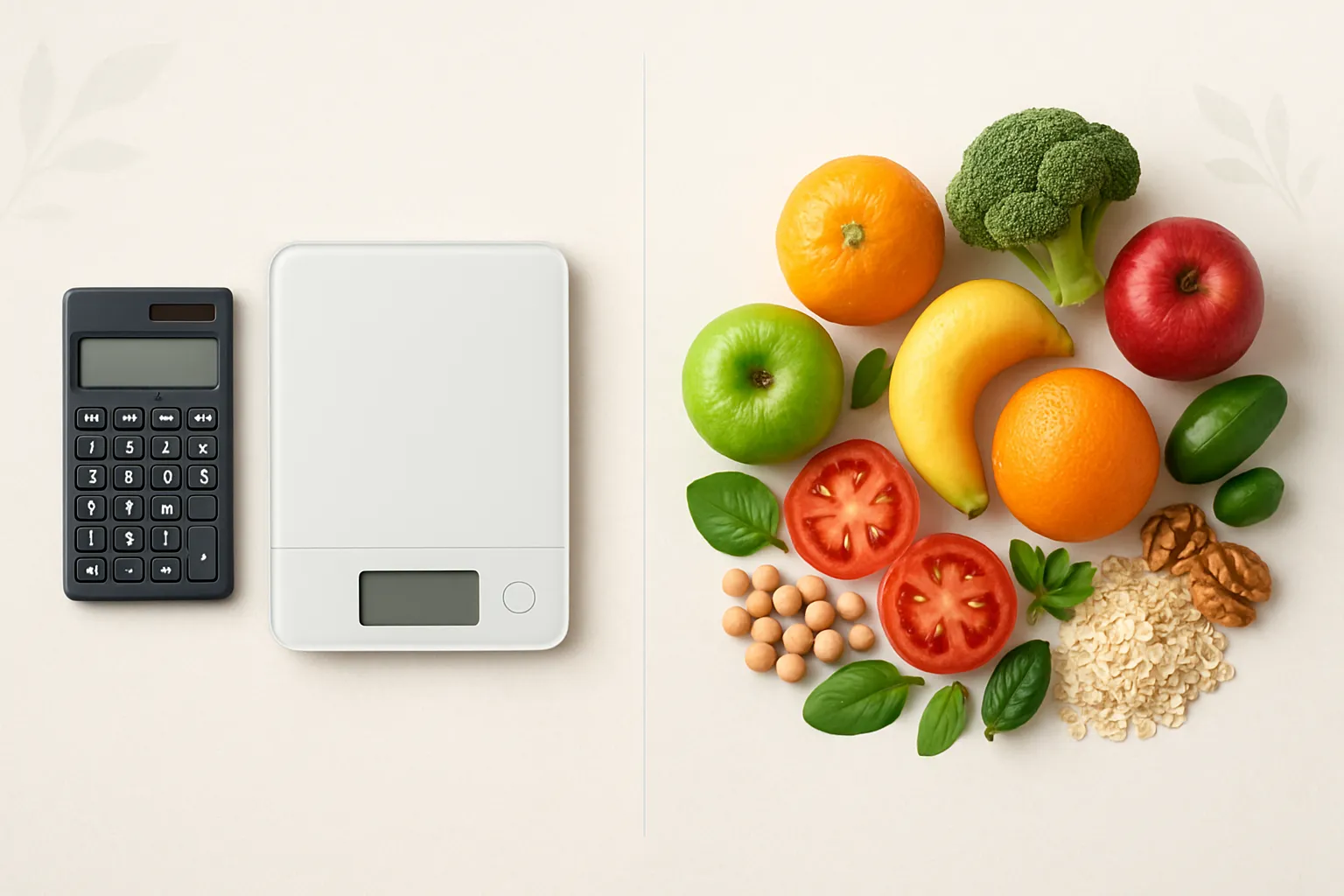
Have you ever felt completely exhausted after eating a "perfect" 1500-calorie day? 🤔
TL;DR - Nutrition vs Calorie Tracking Guide
• The Problem: Calorie counting alone misses crucial nutrition information that affects energy, mood, and long-term health
• Main Insight: Your body processes 100 calories of chicken differently than 100 calories of candy - same energy, completely different nutritional impact
• Key Benefits: Better energy stability, reduced cravings, improved digestion, and sustainable weight management through comprehensive nutrition tracking
• Action Steps: Focus on protein goals → Track fiber intake → Monitor micronutrients → Use visual cues like NutriScore → Build sustainable meal templates
• Tools: Download NutriScan for comprehensive tracking that shows macros, micros, and food quality scores beyond just calories
I remember my friend telling me about her experience last year. She was religiously tracking calories, staying under her daily limit, eating those 100-calorie snack packs, and wondering why she felt terrible all the time. Her hair was falling out, she couldn't focus at work, and she was constantly thinking about food. Sound familiar?
That's when I realized something was seriously wrong with how we approach nutrition tracking. We've been taught to treat our bodies like simple math equations - calories in, calories out. But after working with thousands of NutriScan users and seeing their meal patterns, I can tell you this: your body is not a calculator.
Quick Comparison: What Are You Really Tracking? 🔍
| Calorie Counting | Nutrition Tracking |
|---|---|
| ❌ Numbers-only focus | ✅ Complete food picture |
| ❌ Frequent energy crashes | ✅ Sustained energy levels |
| ❌ Hunger between meals | ✅ Natural satiety |
| ❌ 20% long-term success | ✅ 60% long-term success |
| ❌ Food guilt and obsession | ✅ Confident food choices |
Why I Stopped Calorie Counting and Started Nutrition Tracking 🔄
 Making the shift to nutrient-focused eating choices
Making the shift to nutrient-focused eating choices
Let me share three examples that changed how I think about nutrition:
Sarah's Story (26, Software Engineer, Seattle): She ate exactly 1,200 calories daily but mostly from processed foods. Despite the "right" calorie count, she was getting only 8 grams of protein per day. No wonder she felt weak during her evening walks! NutriScan revealed her meals were 70% carbs, 25% fat, and only 5% protein. After adjusting to include more protein-rich foods while keeping similar calories, her energy transformed within two weeks.
Carlos's Experience (34, Construction Worker, Mexico City): This fitness enthusiast ate 2,000 calories of "clean" foods but got zero omega-3s and barely any fiber. His digestion was a mess, and joints hurt after workouts. NutriScan showed him micro-nutrient gaps that calorie counting missed completely. Adding flaxseeds and vegetables didn't change his calorie count much, but eliminated his joint pain.
Aisha's Journey (42, Marketing Manager, London): A busy mom who survived on energy bars and diet sodas that fit her 1,500-calorie budget. She was getting 45 grams of sugar daily and almost no vitamins. Her 3 PM crashes were brutal! Now she focuses on nutrient density, and even eating the same calories, her energy stays steady from morning meetings to bedtime stories.
David's Transformation (58, Teacher, Toronto): After his doctor warned about pre-diabetes, he started strict calorie counting. But eating 1,800 "low-calorie" processed meals left him hungry and moody. NutriScan revealed he was missing fiber and healthy fats. Switching to nutrient-dense whole foods at the same calorie level stabilized his blood sugar and eliminated cravings.
Real Stories From Real People 📖
The difference becomes crystal clear when you compare actual meals. Let's look at two 400-calorie lunches:
Option A (Calorie-Focused):
- 1 protein bar (200 cal)
- 1 diet soda (0 cal)
- 1 bag of pretzels (200 cal)
- Total nutrition: 8g protein, 2g fiber, 35g sugar, minimal vitamins
Option B (Nutrition-Focused):
- 150g grilled chicken (230 cal)
- 1 cup mixed vegetables (80 cal)
- 1/2 cup brown rice (90 cal)
- Total nutrition: 32g protein, 8g fiber, 4g sugar, rich in B-vitamins, iron, potassium
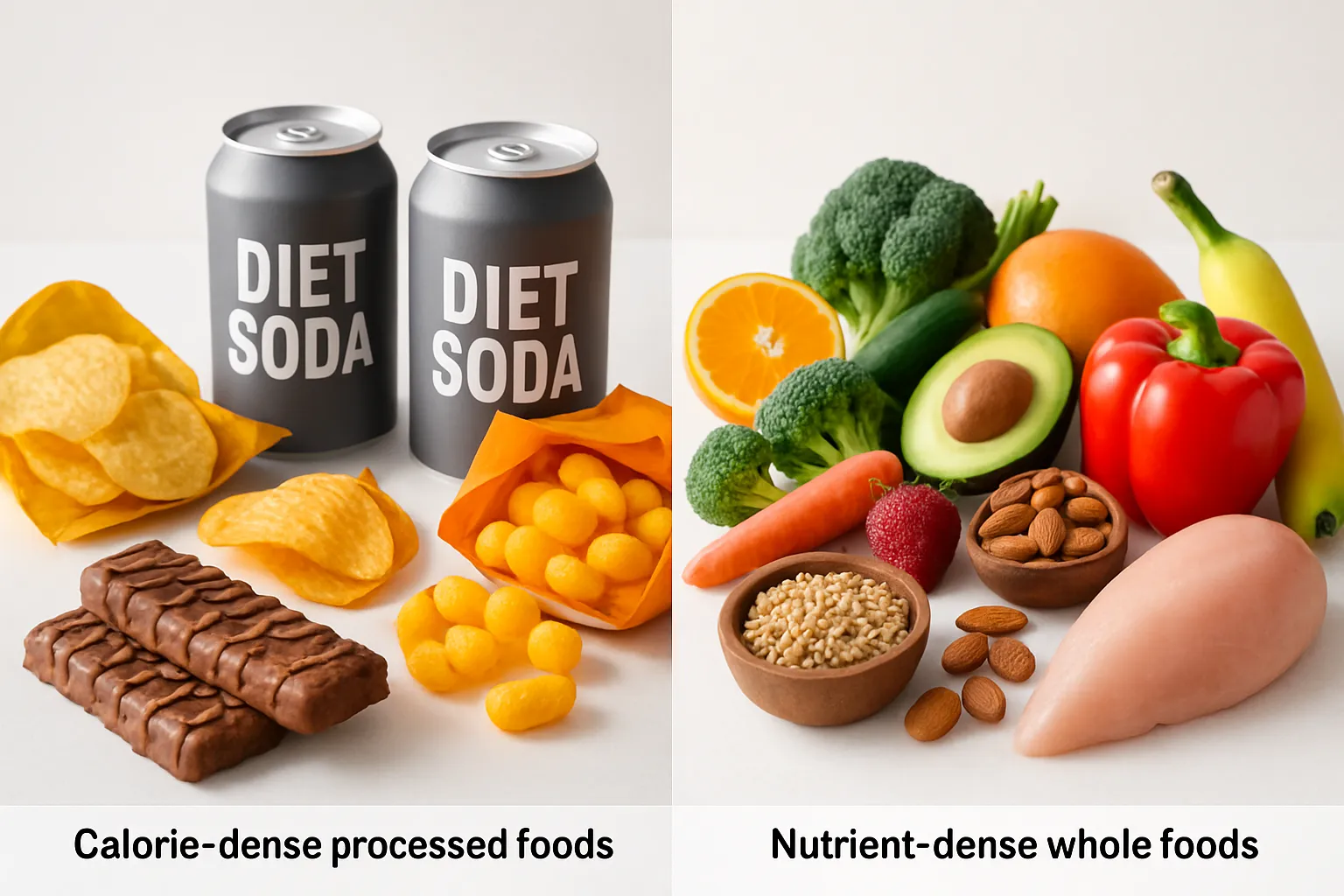 Same 400 calories, dramatically different nutritional impact - processed foods provide mostly sugar while whole foods deliver essential nutrients
Same 400 calories, dramatically different nutritional impact - processed foods provide mostly sugar while whole foods deliver essential nutrients
Visual Breakdown: Macro Distribution Comparison
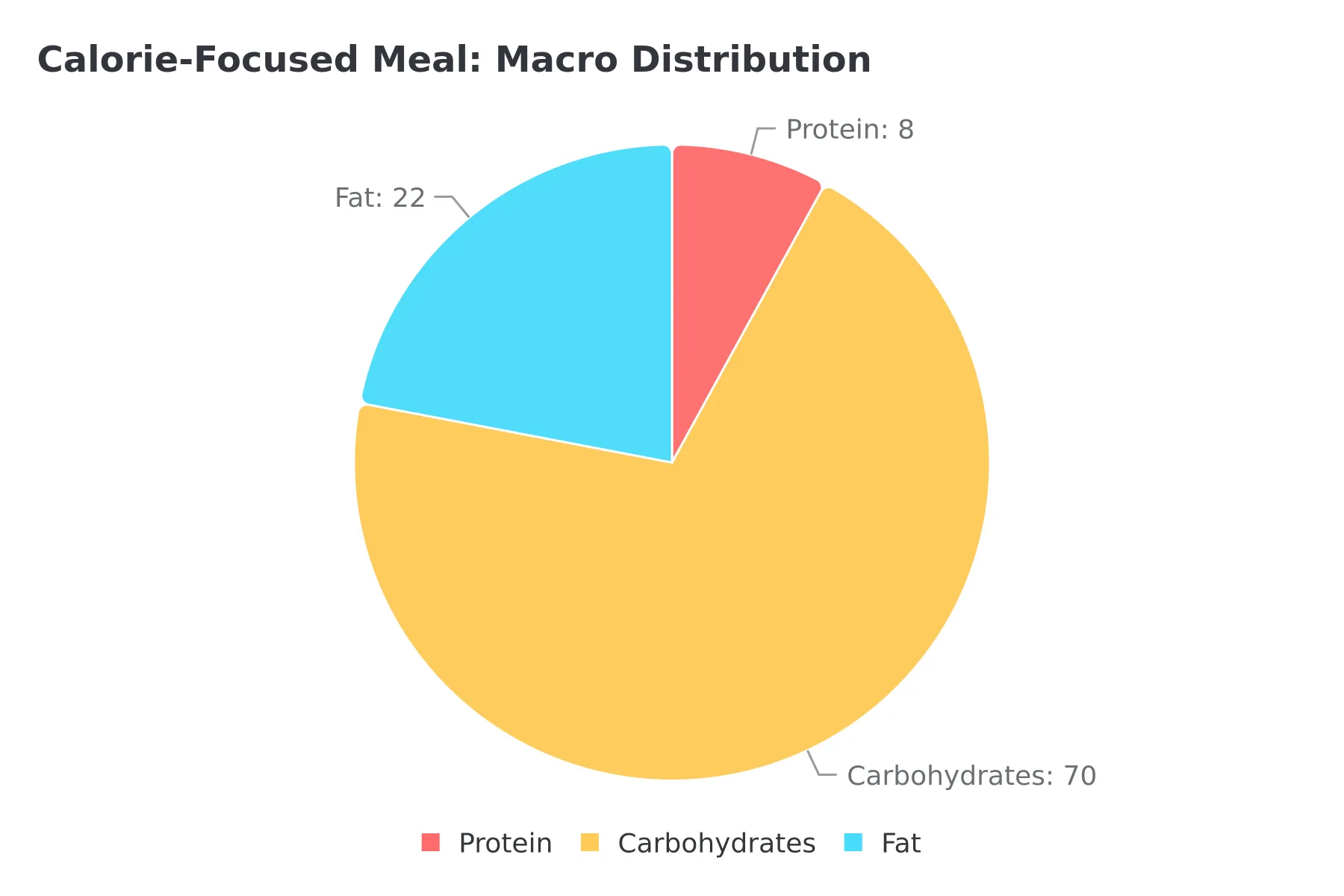 Calorie-Focused Meal: Heavily skewed toward carbohydrates with minimal protein
Calorie-Focused Meal: Heavily skewed toward carbohydrates with minimal protein
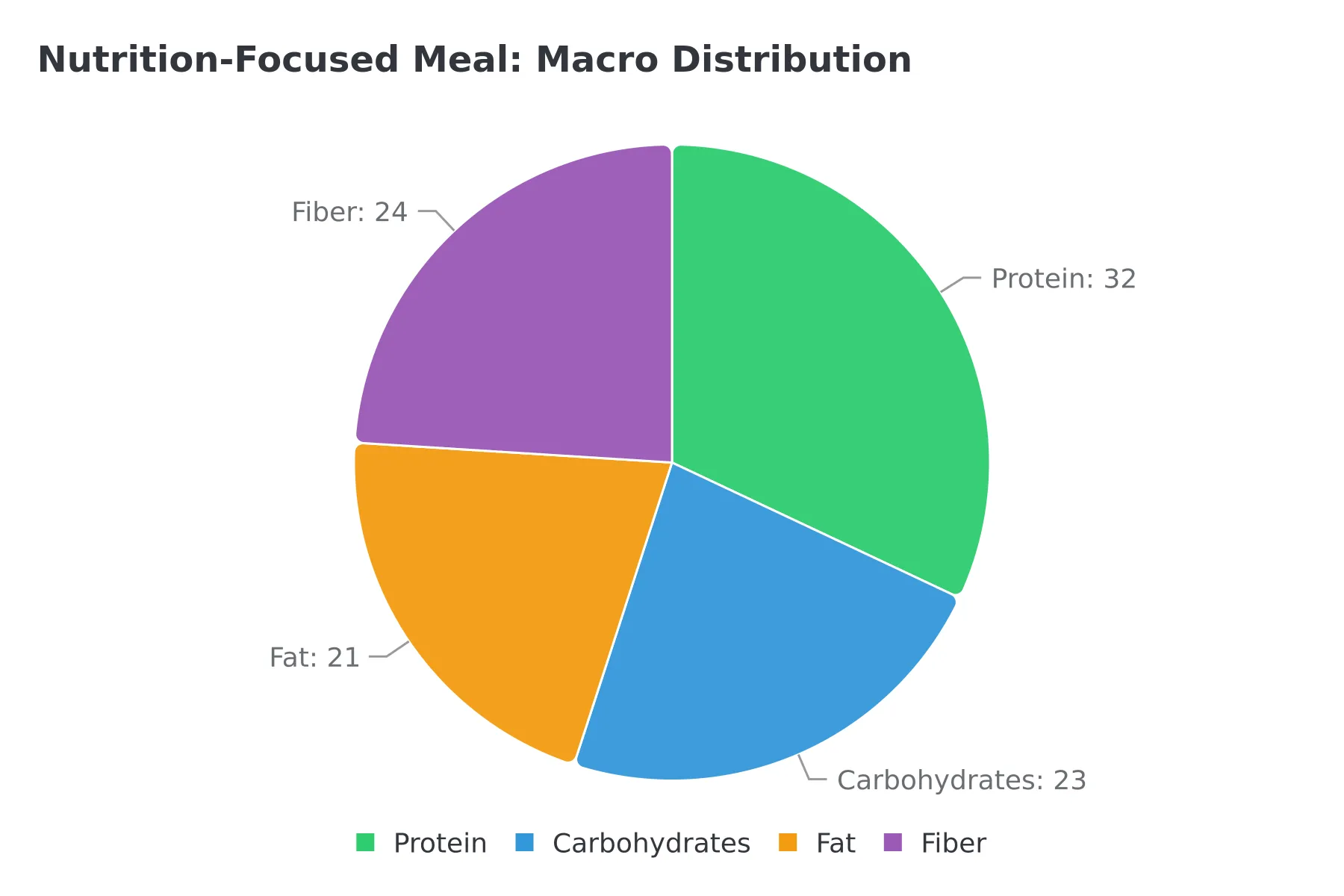 Nutrition-Focused Meal: Balanced macros with substantial protein and fiber for sustained energy
Nutrition-Focused Meal: Balanced macros with substantial protein and fiber for sustained energy
The calorie math is nearly identical, but your body's response is completely different. The whole food option provides sustained energy, better satiety, and the building blocks your body actually needs.
Calorie Counting vs Nutrition Tracking: Complete Comparison 📊
| Aspect | Calorie Counting | Nutrition Tracking |
|---|---|---|
| Primary Focus | Total energy intake only | Macros, micros, and food quality |
| Tracking Method | Numbers and math | Visual cues + comprehensive data |
| Energy Levels | Inconsistent, crashes common | Stable energy throughout day |
| Hunger Management | Often hungry between meals | Natural satiety from balanced nutrition |
| Food Choices | "Diet" and processed foods | Whole, nutrient-dense foods |
| Mental Approach | Restriction and guilt | Nourishment and empowerment |
| Long-term Success | 20% maintain results after 1 year | 60% maintain results after 1 year |
| Health Metrics | Weight focus only | Energy, mood, digestion, sleep |
| Learning Curve | Simple but incomplete | Comprehensive but intuitive |
| Typical Tools | Basic calorie apps | AI-powered nutrition analysis |
| Social Impact | Food anxiety and obsession | Confident, informed choices |
| Body Response | Metabolic adaptation, plateaus | Improved body composition |
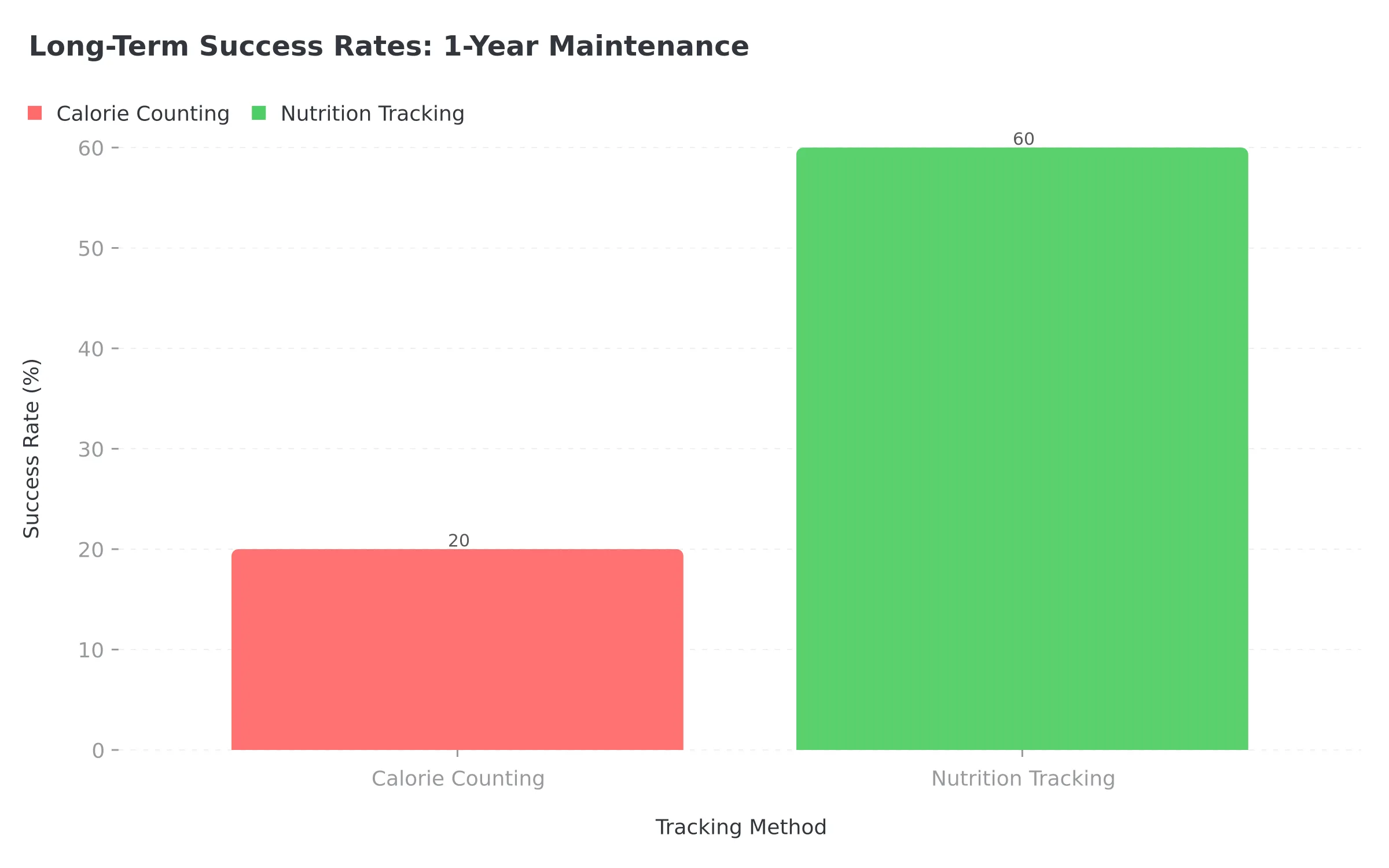 Research-backed success rates: Comprehensive nutrition tracking leads to 3x better long-term maintenance
Research-backed success rates: Comprehensive nutrition tracking leads to 3x better long-term maintenance
Key Takeaway
While calorie counting treats your body like a simple calculator, nutrition tracking recognizes that your body is a complex biological system that needs quality fuel, not just quantity.
Science Shows Why Nutrition Tracking Beats Calorie Counting 🔬
Recent research from the Journal of Nutrition (2024) reveals something shocking: two people eating identical calorie amounts can have completely different health outcomes based on food quality.
Here's what three major studies found:
Hormonal Impact: 500 calories from whole foods triggers better insulin sensitivity and lower inflammation than 500 calories from processed foods.
Gut Health Connection: Fiber intake (not calories) is the strongest predictor of gut microbiome diversity. More diverse gut bacteria = better mood, immunity, and weight management.
Satiety Factors: Higher protein meals keep you full 3-4 hours longer than low-protein meals - even with identical calories. This explains why some "low-calorie" diets leave you starving.
Interesting Facts That Will Change Your Perspective 🤯
Fact 1: Your body burns different amounts of energy digesting different foods (thermic effect). Protein requires 20-30% of its calories just to digest, while fat only needs 0-3%.
So 100 calories of chicken breast actually gives you fewer net calories than 100 calories of butter. Mind-blowing, right?
Fact 2: Fiber doesn't get absorbed, but it feeds your gut bacteria. These bacteria produce short-chain fatty acids that boost metabolism and reduce inflammation.
Calorie counters often ignore fiber completely, missing this crucial health component.
Fact 3: Your brain uses 20% of your daily calories and runs primarily on glucose. Cut carbs too low while staying within calorie limits? You're literally starving your brain.
That's why so many low-calorie dieters experience brain fog!
The Bottom Line: Nutrition-focused eating leads to stable energy all day. Calorie-only approaches cause afternoon crashes and inconsistent performance.
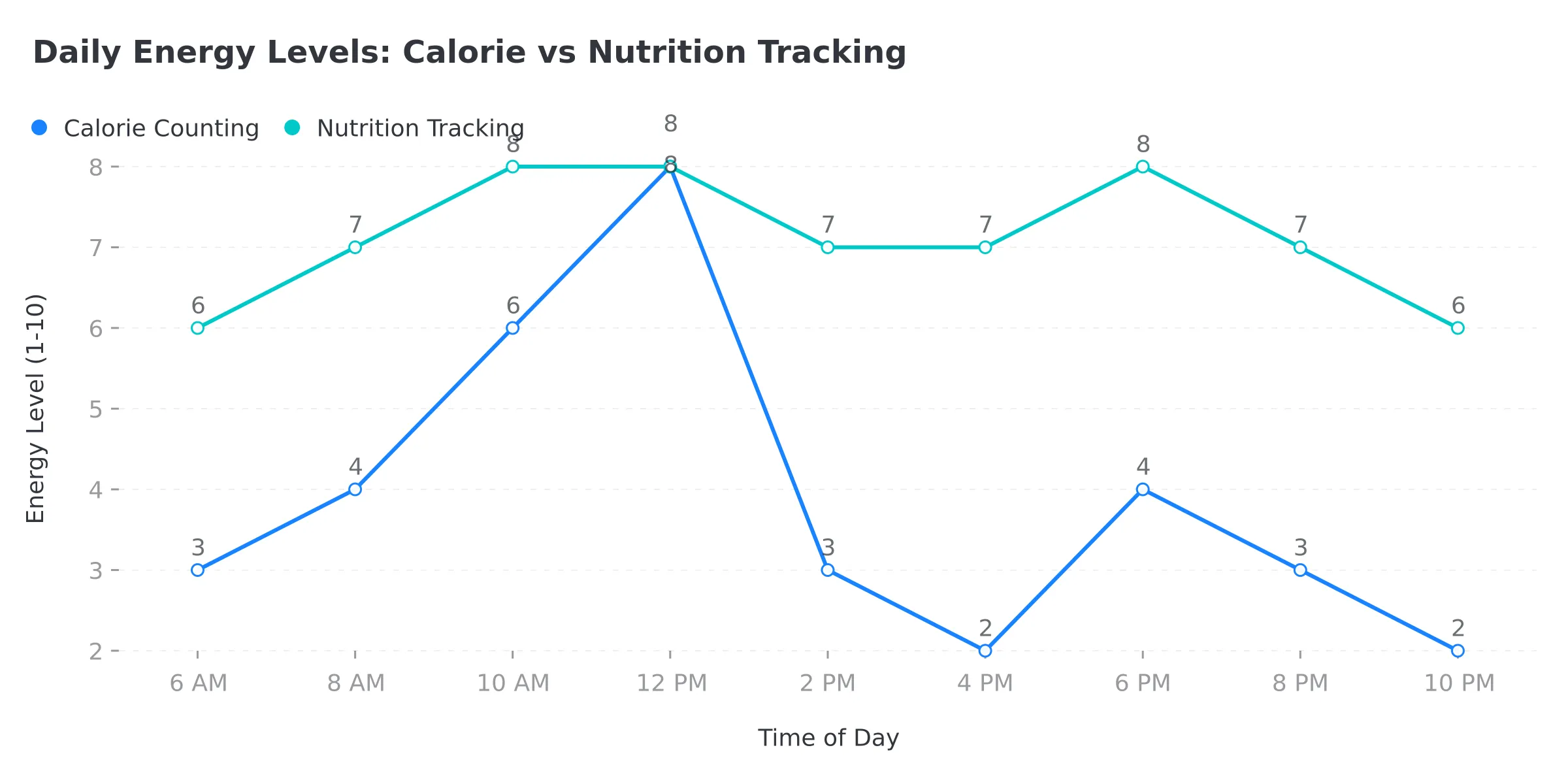 Energy Pattern Analysis: Nutrition tracking maintains consistent energy while calorie counting creates peaks and crashes
Energy Pattern Analysis: Nutrition tracking maintains consistent energy while calorie counting creates peaks and crashes
7 Evidence-Based Nutrition Tracking Tips for Weight Loss ⚡
 Using technology to track comprehensive nutrition data beyond simple calories
Using technology to track comprehensive nutrition data beyond simple calories
1. Start with Protein Goals: Set a daily protein target first—aim for 0.8-1g per kg of body weight. The app shows protein content instantly after scanning meals, ensuring muscle maintenance during weight loss.
2. Track Your Fiber: Aim for 25-30g daily. Simple additions like an apple and chickpeas can dramatically improve your fiber intake and energy stability.
3. Watch Your Sugar: Keep added sugars under 25g daily. The app breaks down sugar content separately from total carbs, helping you make smarter packaged food choices.
4. Include Healthy Fats: Don't fear calorie-dense fats. Focus on omega-3s from walnuts or fish. The app helps balance saturated and unsaturated fats automatically.
5. Use the NutriScore Feature: This color-coded system (green to red) gives instant meal quality feedback. A meal might fit your calorie budget but show red if it lacks nutrients.
6. Copy Balanced Meals: Found a perfectly balanced meal? Use the "Copy Meal to Today" feature to repeat nutritious combinations effortlessly.
7. Ask Monika for Guidance: The voice AI nutritionist provides personalized suggestions based on your eating patterns—no more random Google searches.
Step-by-Step Guide to Transitioning from Calorie Counting to Nutrition Tracking 📋
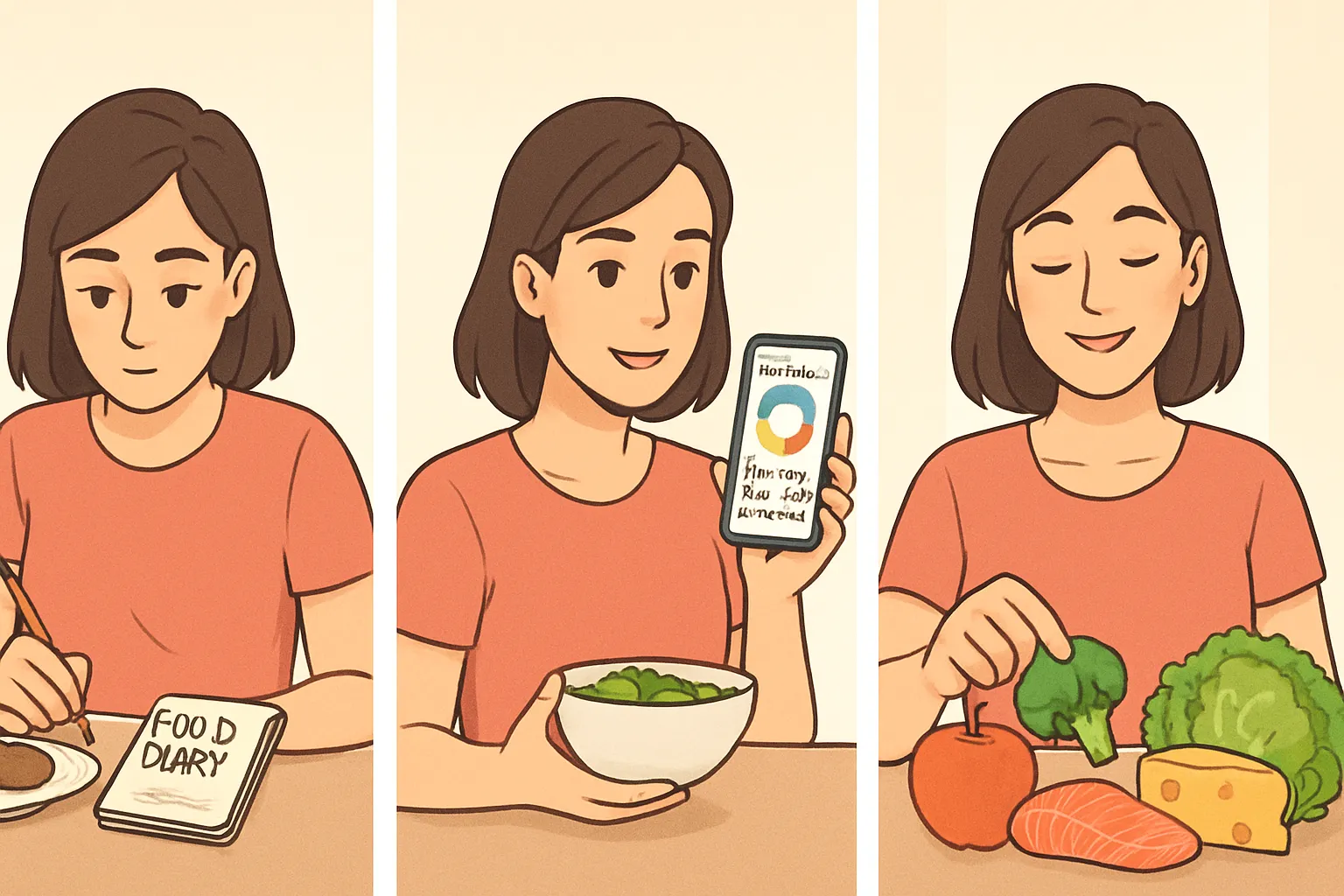
Step 1: Assess Your Current Intake Track your normal eating for one week without changing anything. Just photograph meals and observe the nutrition breakdown. You might discover surprising gaps (like getting only 10% of calories from protein).
Step 2: Identify Your Gaps Use NutriBites to ask: "What nutrients am I missing?" Common gaps include fiber (under 15g), omega-3s, vitamin D, and iron.
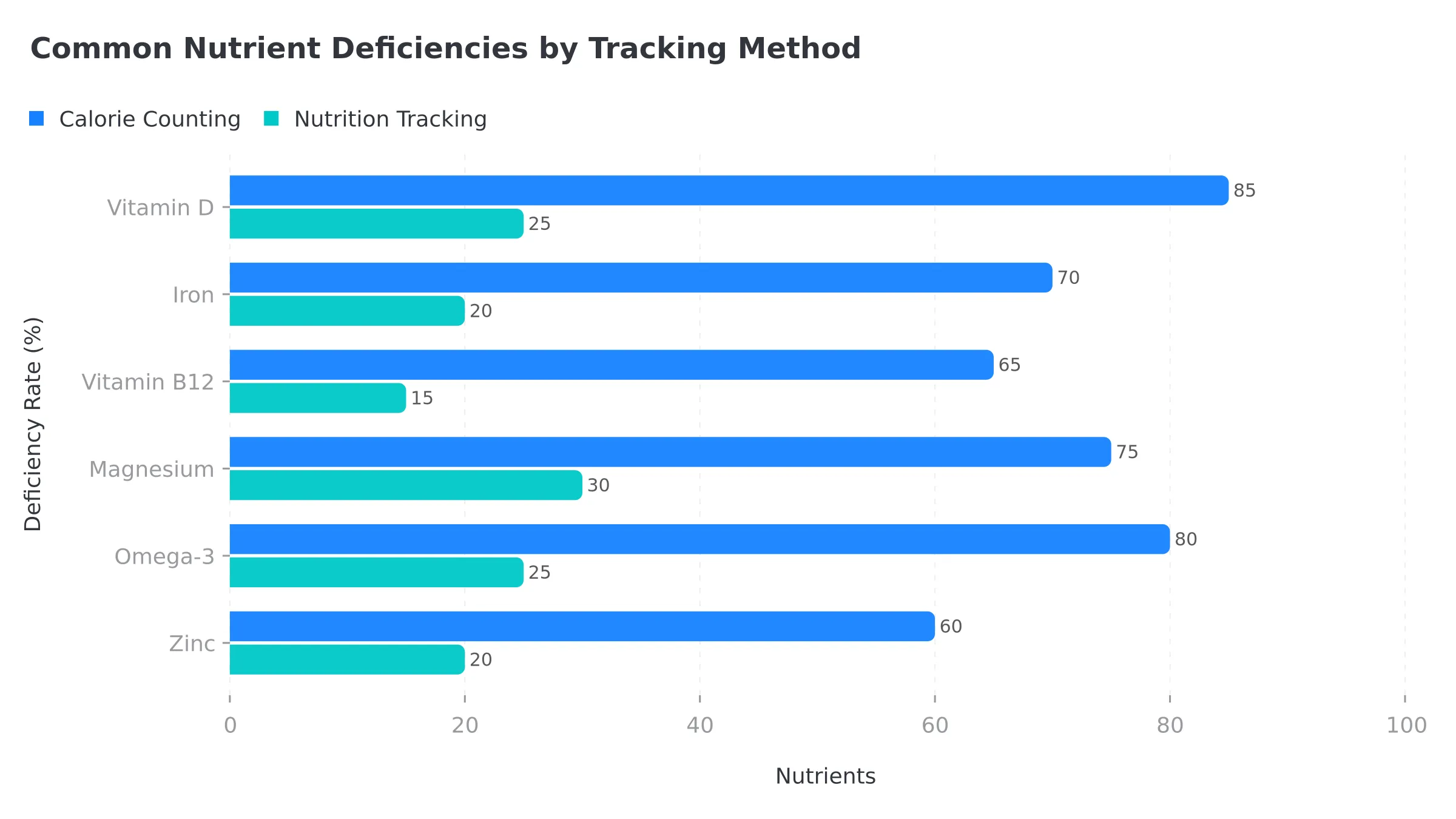 Nutrient Gap Analysis: Calorie counting often leads to significant micronutrient deficiencies
Nutrient Gap Analysis: Calorie counting often leads to significant micronutrient deficiencies
For specific health conditions like PCOS or diabetes, use the specialized PCOS Macro Calculator or Diabetes Macro Calculator to understand your unique needs. Write down your top three nutritional gaps to focus on.
Step 3: Make One Change at a Time Week 1: Add protein to each meal. Week 2: Include more vegetables for fiber. Week 3: Swap processed snacks for nuts. The app suggests additions that fit your preferences.
Step 4: Use Visual Cues and Patterns Watch for patterns of green days in your monthly calendar view. Too many yellow/orange days? Review what made those meals less nutritious. Visual feedback beats calorie numbers.
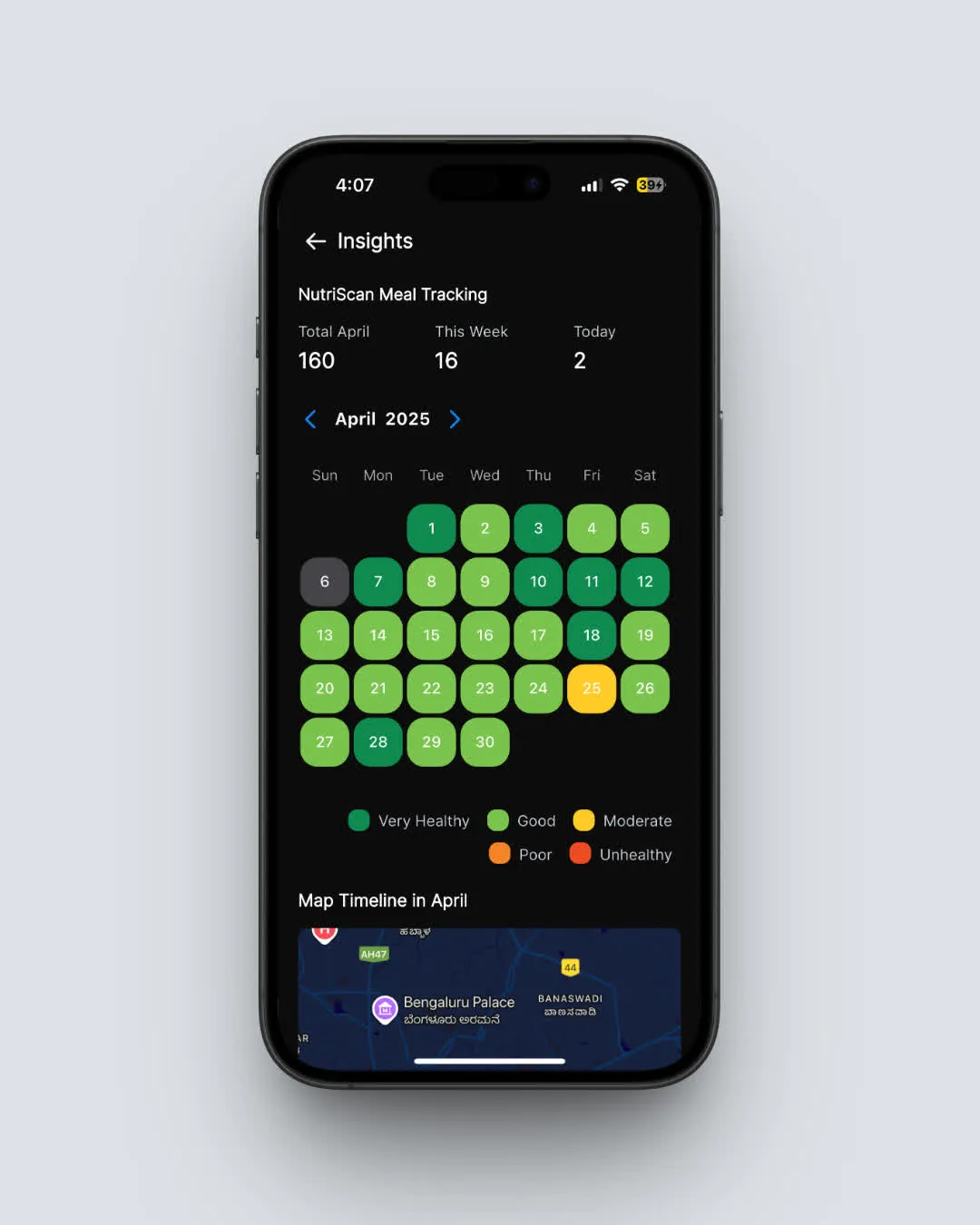 Insights Calendar: Visual nutrition quality patterns help identify trends and improvements
Insights Calendar: Visual nutrition quality patterns help identify trends and improvements
Step 5: Create Your Template After a month, build a collection of go-to meals using the "Start Daily Repeat" feature. This becomes your personalized nutrition framework.
Step 6: Connect Nutrition to How You Feel Track energy, mood, and performance alongside nutrition. Notice patterns: 25g+ fiber = better digestion, adequate protein = less afternoon hunger. Use the app to explore these correlations.
Step 7: Stay Flexible Aim for consistency, not perfection. Follow the 80/20 rule: 80% nutrient-dense meals, 20% for enjoyment. Weekly insights matter more than daily perfection.
What Research Shows 📊
Key Finding: 2024 research shows people tracking macros and micros (not just calories) are 40% more likely to maintain results after one year.
Harvard Study: 10,000 people tracking fiber lost more body fat than calorie counters—even eating the same calories.
Maria's Success (29, Nurse, Barcelona): "Calorie counting failed me for 18 months. Nutrition tracking revealed protein deficiency despite eating 1,400 calories daily. I lost 15 pounds in three months and stopped obsessing about food."
Bottom Line: Understanding nutrition beyond calories develops "nutritional intelligence"—knowing intuitively what your body needs.
Hidden Costs of Calorie-Only Thinking 💸
Bad "Smart" Choices:
- Diet soda over milk (saved 150 calories, lost calcium and protein)
- Pretzels over almonds (lower calories, zero nutrients)
- Skipping breakfast to "save" calories (destroyed metabolism)
Physical costs: Fatigue, poor skin, weak nails Mental costs: Constant math, food guilt, lost joy in eating
Reality Check: Rapid "weight loss" from calorie restriction is mostly water weight—not sustainable fat loss.
Technology Makes It Simple 📱
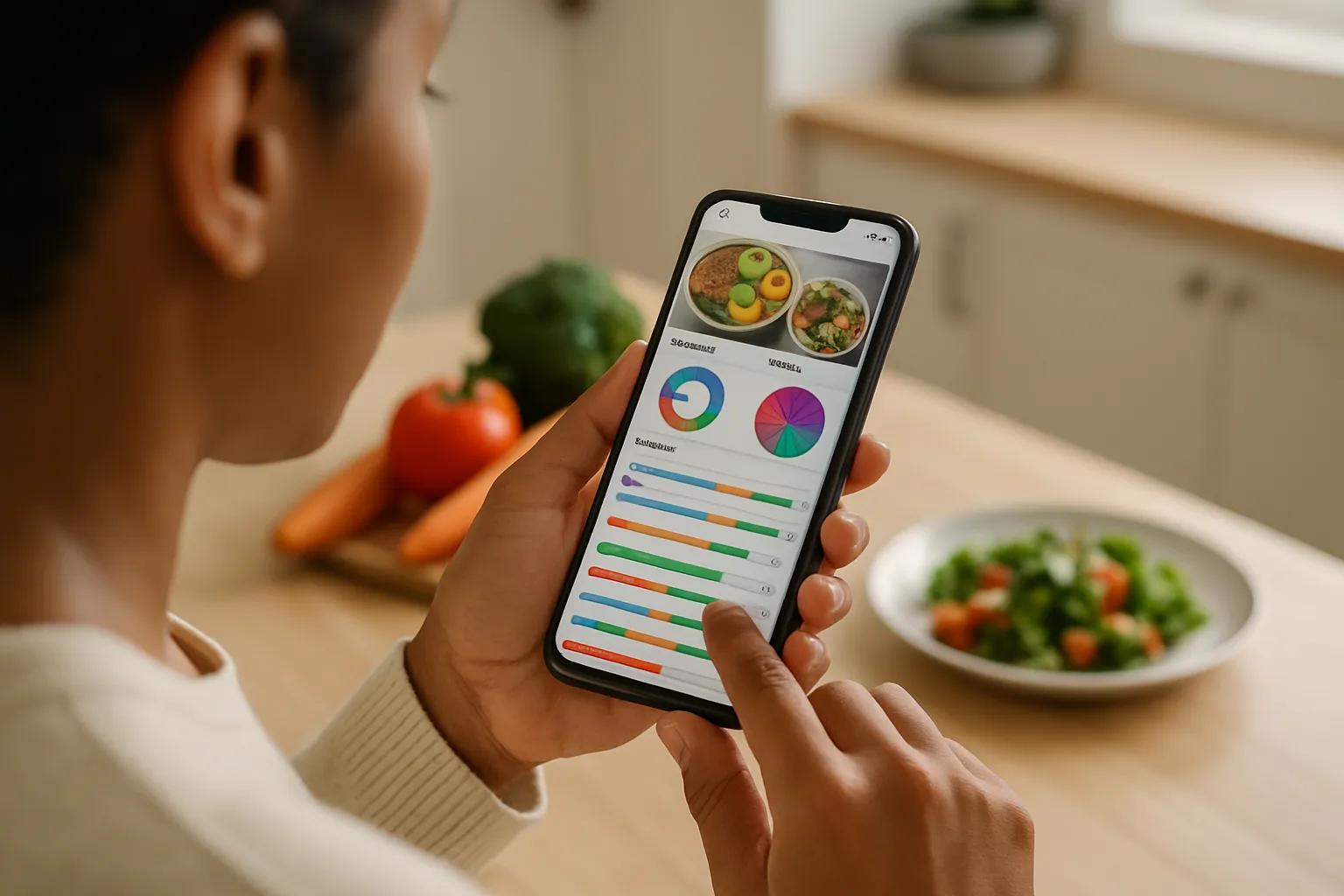
NutriScan simplifies everything: Photo your meal → instant nutrition analysis → color-coded quality score. No memorizing vitamin content or calculating profiles.
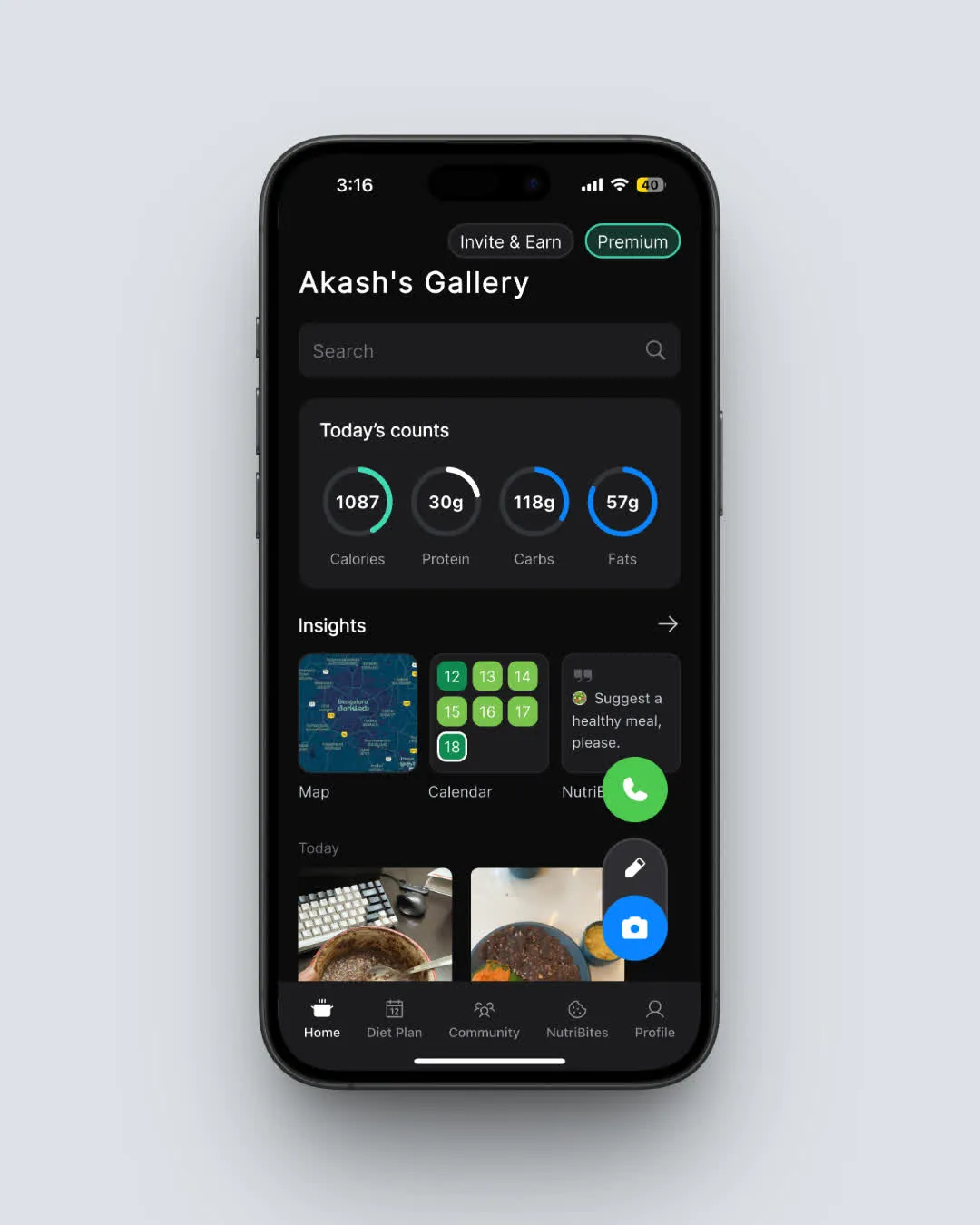 Track everything from calories to calcium with instant NutriScore feedback
Track everything from calories to calcium with instant NutriScore feedback
Voice AI nutritionist: Ask Monika about fatigue and iron levels, or B vitamin intake. Get personalized suggestions based on your meal history.
Community motivation: Rankings based on nutrition quality (not weight loss) keep you focused on health over scale numbers.
My Nutrition Philosophy 🏗️
Quality Over Quantity: 400 calories of nutrients beats 300 calories of empty food
Protein Every Meal: 20+ grams for satisfaction and muscle maintenance
Fiber Non-Negotiable: 8+ grams per meal transformed my digestion and energy
Fats Are Friends: Daily omega-3s support brain function despite being calorie-dense
Micros Matter: Track your top 4 micronutrients per meal—fill consistent gaps
Common Myths ❌
"Too Complicated": Photo-based tracking takes 10 seconds. The app analyzes everything.
"I'll Get Obsessed": Understanding nutrition actually reduces food anxiety.
"Healthy Food Costs More": Lentils, eggs, and seasonal vegetables are affordable powerhouses.
"No Time": Repeat meal features save decision time. Find what works, repeat weekly.
Nutrition as Self-Care 💚
This shift changes your relationship with food entirely. Meals become nourishment opportunities, not math problems.
Key mindset change: "What does my body need?" instead of "How many calories?"
Body signal insights:
- Chocolate cravings → Need magnesium
- Constant hunger → Need more protein or fiber
- Afternoon crash → Poor macro balance
These insights only come from tracking nutrients, not calories.
Your Next Steps 🚀
- Track 3 meals without changing anything—just observe the complete breakdown
- Focus on one gap—protein, fiber, or omega-3s for one week
- Copy balanced meals to build your library of go-to options
- Check weekly patterns—what makes your best days different?
- Be patient—mindset shifts take time, but results are worth it
Nourishment Over Numbers 🌟
Food is information for your cells, fuel for your brain, and building blocks for your body—not just energy units.
When I switched from calorie counting to nutrition tracking, everything improved: stable energy, fewer cravings, easier weight maintenance.
The game-changing question: "How will this nourish me?" instead of "How many calories?"
Your body deserves more than simple math. It deserves real nutrition. Start tracking what truly matters.
FAQ Section ❓
Q: Won't I gain weight if I stop counting calories strictly?
A: Actually, many people find weight management easier when tracking overall nutrition. When you eat adequate protein and fiber, you naturally feel more satisfied and eat less. I personally found that eating 1,800 calories of balanced nutrition kept me fuller than 1,500 calories of processed foods. The NutriScan app shows both calories AND nutrition, so you can monitor both while learning what truly satisfies your body.
Q: How long does it take to see benefits from tracking nutrition vs just calories?
A: Energy improvements often happen within the first week of eating balanced macros. I noticed better afternoon energy after just three days of hitting my protein targets. Digestive improvements from adequate fiber usually show up in 5-7 days. Skin, hair, and nail changes take 4-6 weeks. The app's calendar view helps you track these improvements alongside your nutrition scores.
Q: What if I'm eating out frequently and can't track nutrients accurately?
A: This is where NutriScan shines! Just photograph your restaurant meal, and the AI identifies ingredients and estimates nutrition. The cooking method tags (like deep-fried, grilled, steamed) help adjust for preparation differences. Even if it's not 100% perfect, you'll get valuable insights about meal quality. I've scanned everything from street food to five-star dinners successfully.
Q: Should I still have a calorie goal, or completely ignore calories?
A: I recommend being aware of calories while prioritizing nutrition quality. Set a reasonable calorie range (not a strict number) and focus on filling that range with nutrient-dense foods. The app shows both metrics, so you can ensure you're not overeating while still prioritizing nutrition. Think of calories as one piece of information, not the only information that matters.
Q: How do I know which nutrients I personally need most?
A: Start by tracking normally for a week, then use the NutriBites feature to analyze patterns. Ask questions like "What nutrients am I missing?" or "Why do I feel tired after lunch?" The AI examines your meal history and identifies gaps. You can also use the Premium plan's personalized diet planning, which considers your health goals, activity level, and food preferences to recommend specific nutrient targets. Everyone's needs are different based on age, activity, and health conditions.

 ChatGPT
ChatGPT  Claude
Claude  AI Mode
AI Mode  Perplexity
Perplexity 